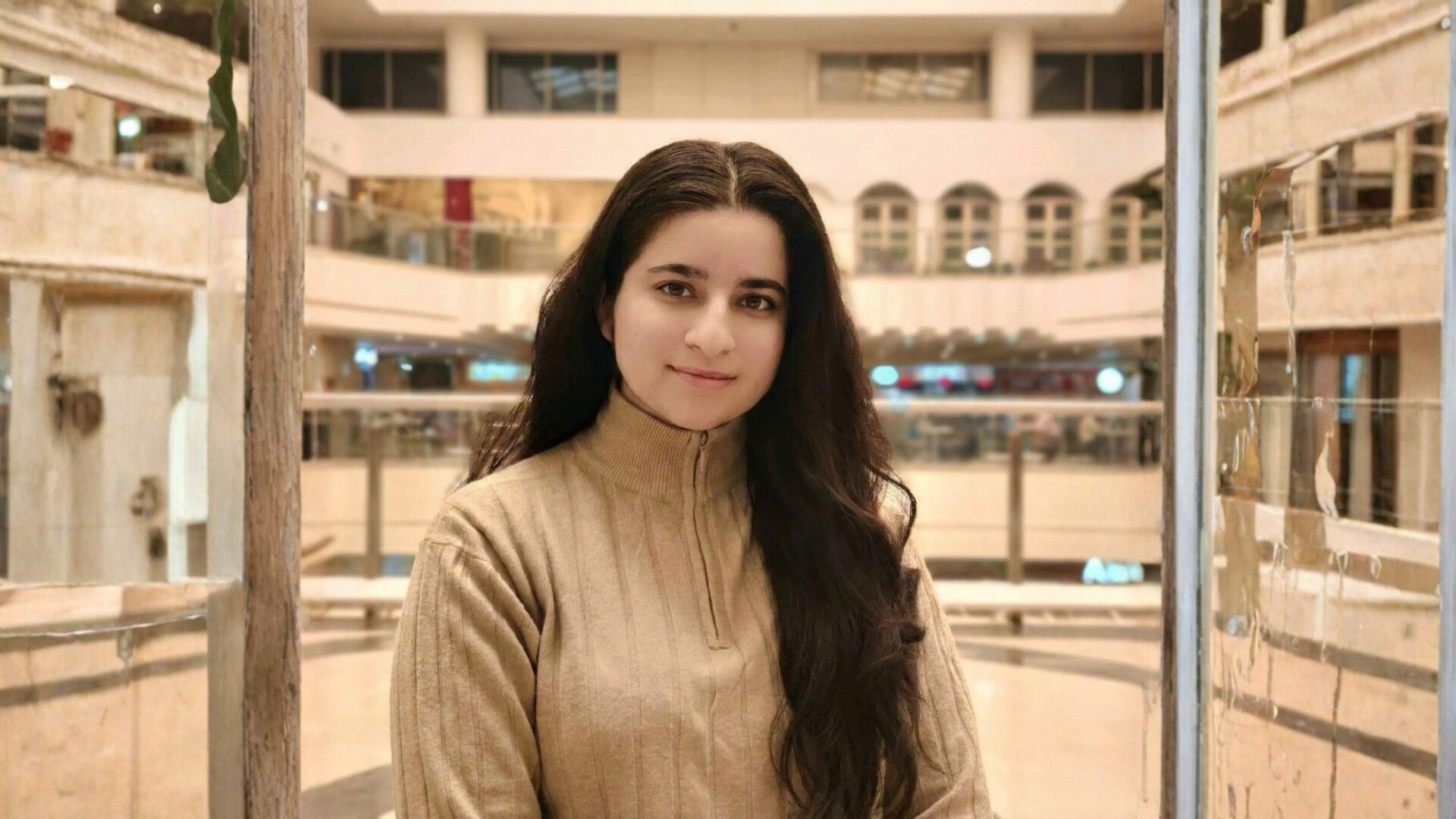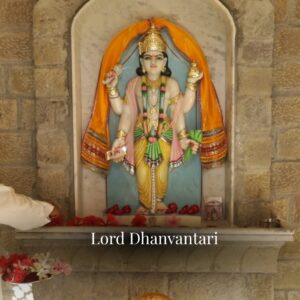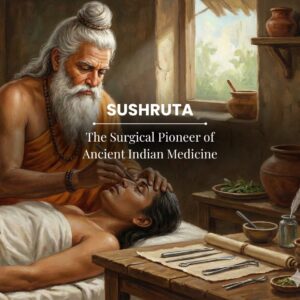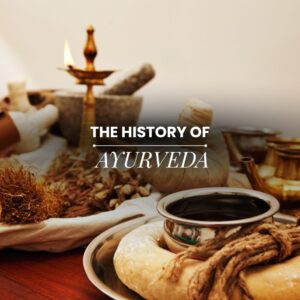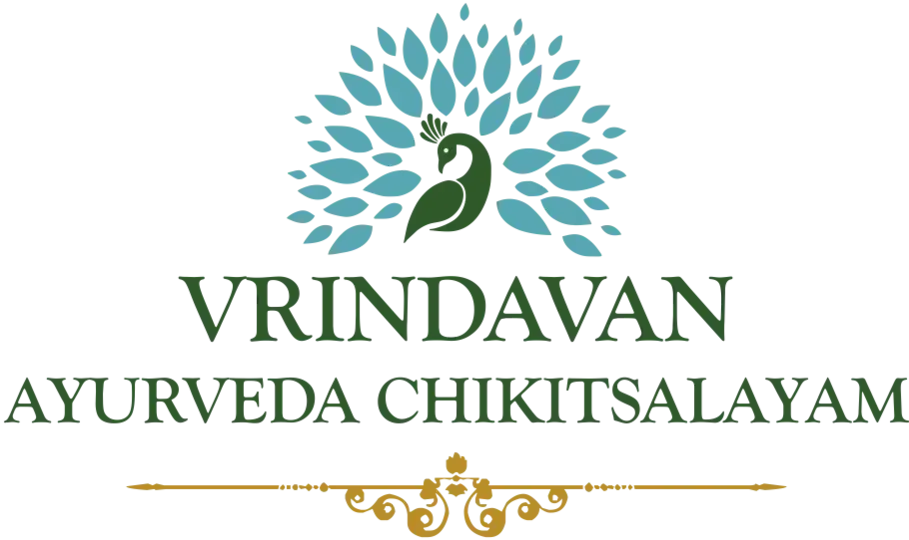Abhyangam or Abhyanga is a body massage done with warm oil. Massage has been used for centuries for both therapeutic and prevention purposes.
The oil is applied to the entire body, from the scalp to the soles of your feet. This is a special warm oil massage in which various strokes are given according to the disease for about 45 ~ 60 minutes.
Meaning of Abhyanga
Abhyanga is a Sanskrit (Indian language) word derived from ‘abhi’ and ‘anga’. Abhi means ‘glow’, and anga means ‘body part’. In a literal sense, Abhyanga would mean glowing body parts.
Abhyanga is a form of Ayurvedic therapy that involves massage of the entire body from the head to the toe with Dosha-specific warm herb-infused oil.
In Ayurvedic texts, Abhyanga is mentioned as part of the daily routine (dinacharya). It is also an essential preparatory step for Panchakarma treatment.
Different types of Abhyangam
Ayurveda classics have mentioned various types of Abhaynga. This classification is done based on the body part being massaged:-
- Sarvanga Abhyanga: Complete body massage.
- Shiro Abhyanga: Massage is done especially on the head.
- Generally, deep stroking is applied in this procedure.
- Ekanga Abhyanga: Massage is done on specific parts of the body, to relieve pain or stiffness.
- Pada Abhyanga: Foot massage done for the foot and toes. It helps to provide relief from aching feet and related problems.
- Marma Abhyanga: Pressure point massage.
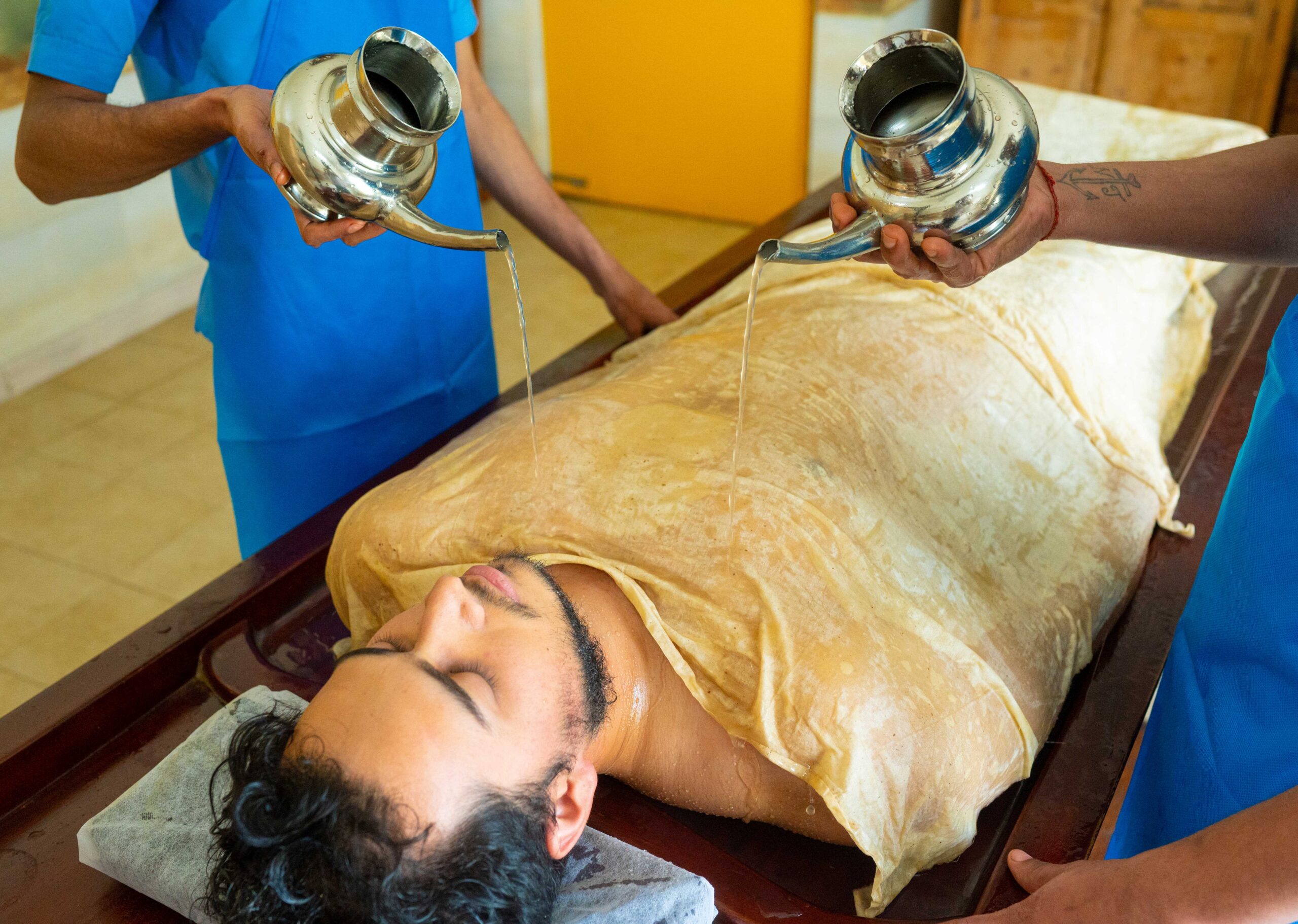
Abhyanga Procedure
Depending on the specific disease, medicated oils are chosen very carefully. The best oil for Abhyanga depends on your “dosha,” or body type. As per Ayurvedic texts, use oil according to skin type. Use Vata balancing oils (sesame, almond) for dry skin, Pitta balancing oils (coconut, sunflower) for sensitive skin and Kapha balancing oils for oily skin (safflower). Jojoba oil is good for all skin types.
Clothes other than the undergarments of the person whose Abhyangam is to be done are removed so that massage can be done on body parts.
The person lies down on his back on Droni (special Ayurveda massage table)
The therapists then warm the oil to a soothing temperature. Further, the oil is applied to the head first and then the whole scalp.
Then oil massage of the ear, palm and feet is done. The heated oil is applied uniformly to the body, by the two therapists standing on both sides of the Droni table.
Afterwards massage of the head is done and subsequently moves down to the neck, upper back, shoulders, upper arms, forearms, hands, chest, abdomen, lower back and lower limbs.
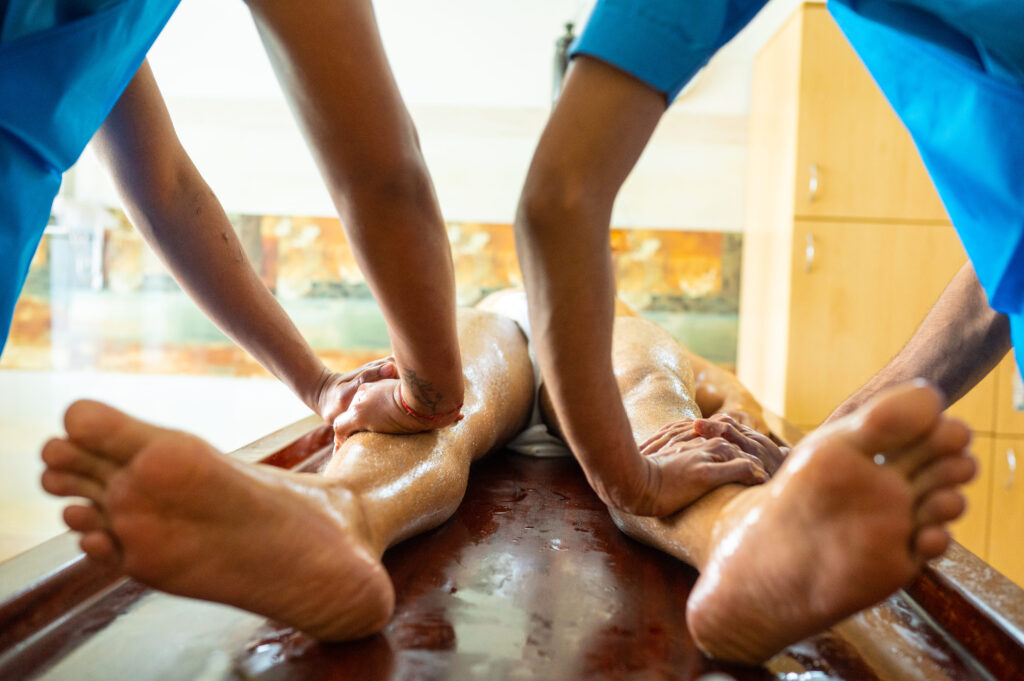
The proper procedure of Abhyanga is that it is performed in seven (7) sequential postures. These are: sitting, supine (lying on the back), left lateral, prone (lying on the stomach), right lateral, supine (lying on the back) and sitting.
Overall upward and downward strokes are done by therapists while doing Abhyanga on hands and legs. Circular strokes are used for massaging joints, chest and abdomen.
The whole Abhyanga procedure normally takes 45 minutes.
Selecting an Appropriate Abhyangam Oil
Choosing the appropriate oil for Abhyangam (Ayurvedic Massage) is crucial to maximize the benefits of this traditional therapy. Since, Abhyanga involves the application of warm oil to the body to balance the doshas, understanding the oil recommendations based on dosha is important.
For Vata Dosha : Sesame, Almond, Ashwagandha, Mahanarayan, Bala oil have the Vata-pacifying properties.
For Pitta Dosha : Coconut, Sunflower, Neem, Bhringaraj, Brahmi oil have cooling and calming effects on the mind and body.
For Kapha Dosha : Mustard, Olive, Eucalyptus, Corn oil stimulates circulation and has clearing properties.
How Abhyangam Therapy Works?
It works on the body on both levels:
Physical – Rubbing the body produces heat and increases blood circulation, it affects the lymphatic system and supplies more nourishment to the blood. Also, the warmness of the oils and massage techniques ensure that oxygen and nutrients are effectively delivered to the cells while removing metabolic wastes.
Psychological – Through touch, massage works on the nervous system and affects the circulation of growth hormones.
In Ayurvedic texts, limited description is mentioned of how Abhayangam works for the body. It’s mentioned that if Abhyanga is done for sufficient time, the oil reaches the different Dhatus (potency of oil to get absorbed into the skin). The application of touch and pressure in various manners constitutes the manoeuvres of massage.
The modern view is that internal fluids of the skin are subjected to movement in the massage because of osmotic pressure. Massage causes mechanical hydrostatic pressure in the extracellular compartment. Massage helps fluid enter into viscera, and tissues and dilute the accumulated toxins. The diluted toxins are brought into general circulation and during the course; they are expelled via elimination procedures.
Benefits of Abhyanga
- Abhyangam enhances the skin condition by improving the function of the sebaceous and sweat glands, which keep the skin lubricated and clean.
- It increases the secretion and excretion functions of the body. It also increases the production of gastric juices, saliva and urine. There is increased excretion of nitrogen, inorganic phosphorus and salt also. Hence, all this results in better digestion and metabolism.
- Abhyanga provides a gentle stretching action to both the muscles and connective tissues thereby making muscles and tissues more elastic.
- Abhayanga promotes recovery from fatigue, aches and pains.
- Abhyangam may also stimulate the release of endorphins and reduce the level of certain stress hormones.
FAQs on Abhyangam Massage Treatment
Q1. Does Abhyanga suit all types of the body?
Abhyangam massage in Ayurveda is a treatment that is suitable for all body types. However the important thing to note is to always consult with an Ayurvedic doctor to get maximum benefits from a personalized treatment plan and herbal oils.
Q2. What is the primary difference between Abhyanga massage and other types of massages?
Abhyanga massage is an Ayurvedic technique that includes the use of warm herbal or medicated oils to balance the unbalanced doshas. It is known to stimulate the lymphatic system and addresses the physical, emotional, and spiritual needs of an individual. Unlike other massages like deep tissue that concern with only the muscles.
Q3. What is ideal to wear for an Abhyanga massage?
Any individual getting this Ayurvedic massage should wear loose-fitting and comfortable massage that can be easily removed before the treatment.
Q4. How often should Abhyangam be performed?
For best results, Abhyanga can be done daily or at least 2-3 times a week. Further, its frequency can vary based on individual needs and health conditions.
Q5. What precautions should be taken during Abhyangam therapy?
1) Only use warm oils to enhance its effectiveness.
2) Be gentle on sensitive and injured areas.
3) Consult with an Ayurvedic doctor in case of medical conditions or pregnancy.

